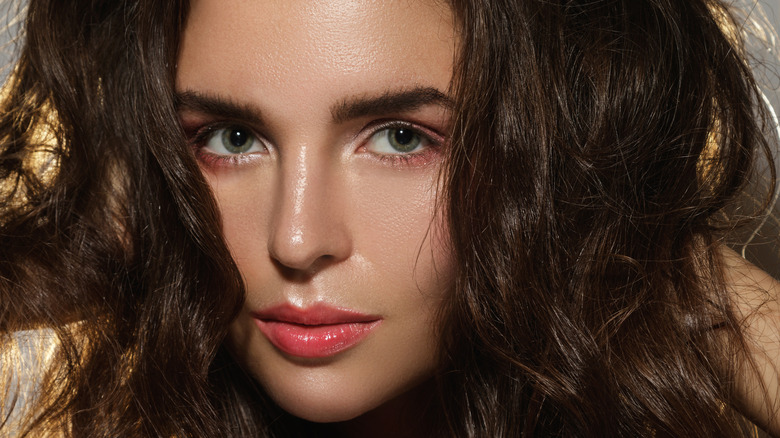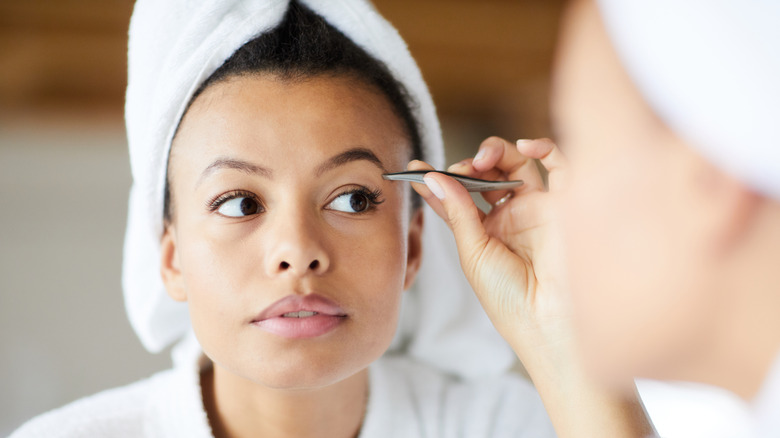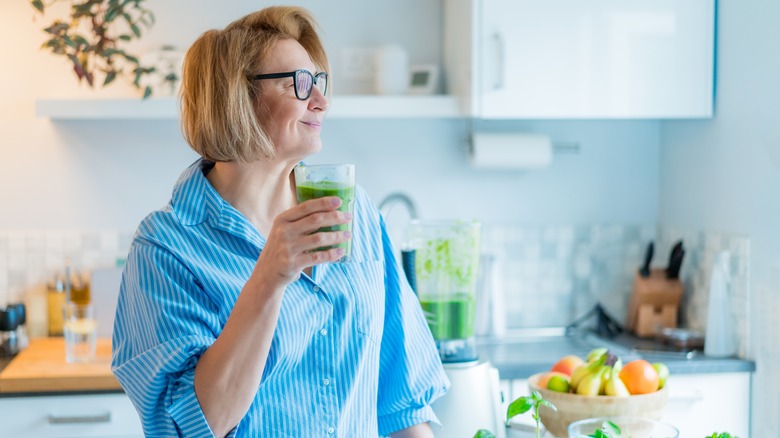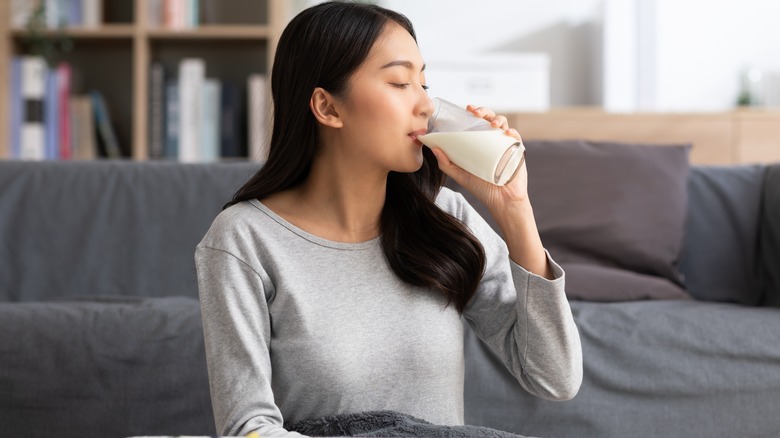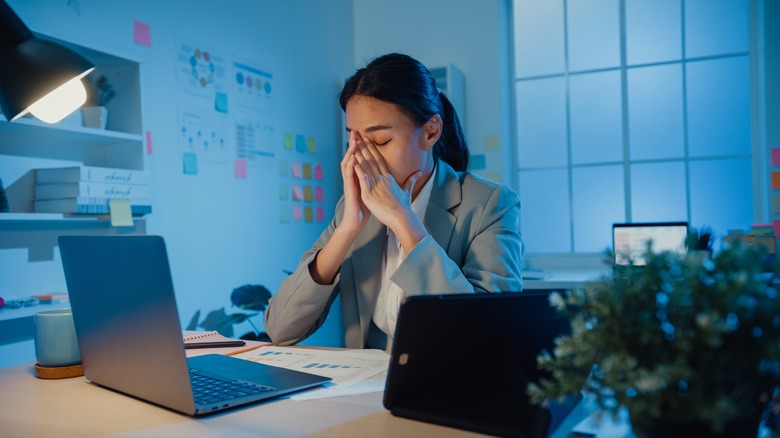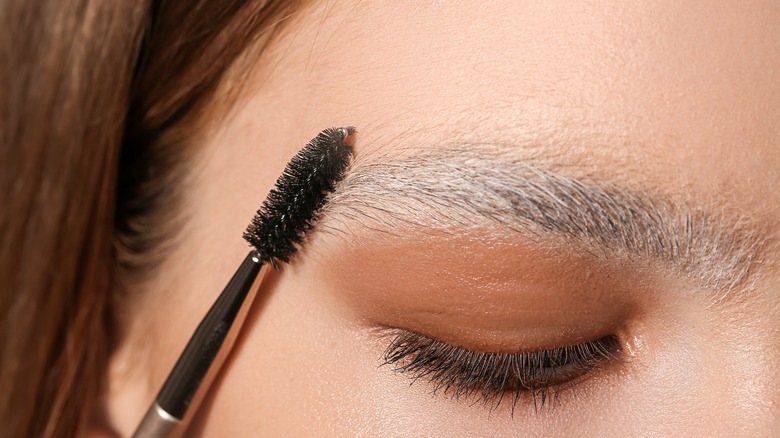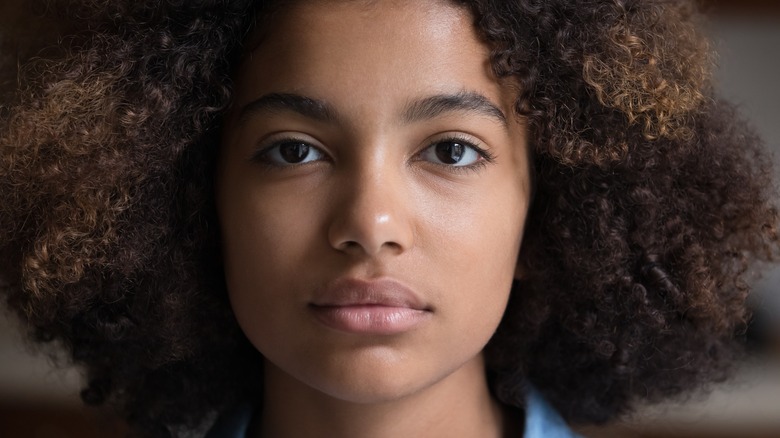Reasons You Have Thin Brows (& How You Can Capture A Full, Fluffy Look)
Thick eyebrows can completely change your face. Lately, full, fluffy brows have become a popular beauty trend — and if Cara Delevingne's eyebrows have inspired you, you aren't alone! There are numerous ways to get her signature fluffy brow.
For example, eyebrow makeup is among the simplest and most popular approaches. A brow pencil, powder, gel, or serum can fill in the gaps and give the appearance of more fullness. To avoid a harsh or unnatural appearance while using these products, select a shade that complements the color of your natural brow. Microblading is another well-liked technique, which involves tattooing small, hair-like strokes onto the skin. As a semi-permanent procedure, microblading may need touch-ups every couple of years.
If you have thin brows, you've come to the right place. While achieving flawless brows requires regular brow upkeep, there are things you can do in the meantime to reach your fluffy-brow potential. Use tweezers to shape and remove stray hairs, but avoid over-tweezing or waxing. Plus, a good diet helps encourage healthy hair growth. To learn more, here are the reasons you have thin brows (and how you can capture a full, fluffy look).
Genetics
Heredity plays a huge role in determining the appearance of eyebrow hair. A 2015 study published in Nature Communications found a strong connection between genes and the appearance of eyebrows, particularly regarding their "thickness" and "density." Some people are born with naturally thinner eyebrows, and that's okay!
According to Healthline, if you were born with thin brows, it may be unlikely to get them to the desired thickness naturally. But don't worry — if you want fuller, thicker brows, an eyebrow pencil, powder, gel, or serum can fill in the bare spots and give the appearance of more prominent brows. For a more semi-permanent option, there's always microblading if you're willing to invest some upkeep and money.
For the natural growth of eyebrow hair, eat a balanced diet. Avocados, nuts, eggs, spinach, and other foods high in vitamins and minerals are excellent nutrients that encourage hair development. You can make many fun, tasty meals with these types of foods! These meals provide minerals like iron and zinc and vitamins like vitamins A, B, and biotin, all necessary for good hair growth. Start including these nutrients in your diet today. It could start with a simple snack, such as avocado toast, a spinach omelet in the morning, or a fruit bowl.
Over-plucking
Maintaining your eyebrows is terrific for looking well-groomed, but excessive plucking or threading harms the health and appearance of your brows. Too often or harshly threading or plucking the hair damages the hair follicles, weakening the hair and resulting in permanent hair loss and brow thinning over time. "It's repeated trauma that can ultimately cause the root of your hair follicle to stop functioning properly," board-certified dermatologist Anar Mikailov tells Byrdie. "Ultimately the stem cells that create new hair stop regenerating."'
Regrowing your eyebrows after years of over-tweezing takes some work. When grooming your eyebrows, avoid harsh methods or instruments like tweezers or thread and apply moderate pressure. For fuller, fluffier brows, remove stray hairs sparingly. Then, your hair may naturally grow over time, and you'll be met with fuller brows again. In the meantime, try a powder, gel, or growth serum to hasten the process. Ask a professional for advice on maintaining your eyebrows without harming them if you need help with eyebrow maintenance.
Aging
As we age, our eyebrows naturally experience thinning and loss of hair. This can be due to many factors, including a decline in hormones and an increase in brittle follicles due to a lack of elasticity in the skin. Just like we tend to lose hair on the top of our heads as we age, the eyebrows, too, start to diminish.
Use anti-aging skincare products suited to your skin type to help fight brow aging and encourage healthy development. These items promote the synthesis of collagen and elastin, enhancing the appearance of the skin surrounding your brows.
In addition, it's important to carefully cleanse and remove makeup from the area around your brows before you sleep. By doing so, you can avoid the irritability and outbreaks that lead to brow hair loss. Also, use brow serums or growth supplements with keratin, peptides, and biotin as active components. These ingredients support healthy hair growth by nourishing the hair follicles. Collagen is also a great idea, as it promotes hair growth.
Nutritional deficiencies
According to a study shared by Dermatology Practical & Conceptual, dietary deficits are linked to hair loss, especially that of the eyebrows. Factors including biotin, zinc, iron, and vitamin D are essential to the growth and health of eyebrow hair, and their deficiency can have adverse effects. Biotin, commonly called vitamin H, is crucial in maintaining healthy hair and encouraging growth. Zinc boosts "cell division," which is essential for hair development. Vitamin D is necessary for healthy hair follicles to flourish, while iron helps transfer oxygen to the follicles, stimulating hair growth. Ensure you're getting enough of these nutrients for strong brows!
Medical conditions also play a factor in eyebrow hair development. For example, according to the National Institute of Arthritis and Musculoskeletal and Skin Diseases, one medical condition that can lead to eyebrow hair loss is alopecia. This autoimmune disorder causes hair loss on the scalp and other body areas, including the eyebrows. If you suspect that nutritional deficiencies or medical conditions may contribute to your eyebrow hair loss, consult a physician or dietician. They can help you identify deficiencies and recommend dietary changes or supplements. Once you address your nutritional deficiencies, you're on the fast track to fuller, thicker brows!
Hormonal changes
If your hormones change, chances are, your brows may change with them. According to Water's Edge Dermatology, the thickness of eyebrow hair might alter during pregnancy or menopause because of "fluctuating hormone levels." Talk to your doctor if you notice a dramatic change in your eyebrow thickness to discuss your options. Rest assured, eyebrow thinning during hormonal changes is usually considered temporary, so hang in there.
Loss of eyebrow hair is one of the many hair types that can be affected by stress-induced hormonal changes. So, avoiding stressful situations and maintaining a healthy lifestyle can certainly help bring some life back into those brows. Adequate sleep and stress management techniques such as yoga, deep breathing, and meditation also help prevent hair loss due to stress. Together, these lifestyle factors support the health and thickness of your eyebrow hair.
Rubbing or scratching
Hair loss can occur if the eyebrow area is frequently rubbed, scratched, or rested upon. Friction caused by rubbing or scratching the eyebrows weakens the hair shaft and leads to breakage or shedding. Believe it or not, another thing that can damage hair follicles is sleeping on our faces, as the pillow case can pull on the brow hairs too. We recommend buying a silk pillow sheet for the best results for smoother, healthier hair.
If you want to protect your eyebrows from harm, try not to touch or rub them too much. A cap or headband, for instance, keeps hair out of your eyes and ears and reduces the risk of scratching or rubbing your eyes or nose. Also, be gentle when you wash your face or remove your makeup, ensuring you aren't rubbing or tugging the hair.
Harsh chemicals and cosmetics
Bleached eyebrows are trendy — but according to board-certified dermatologist Marisa Garshick, "Eyebrow bleaching can cause potential weakening and thinning. People who have thick brows might not necessarily notice that impact, but, the same as doing any kind of chemical processing for your scalp hair, over time that can have an impact on the hairs. And in terms of brows, we don't have as much reserve" (per Well + Good).
Excessive usage of beauty products might also harm hair follicles, resulting in hair thinning and breaking. According to Healthline, repeatedly applying "harsh" cosmetics "creates minor trauma" in the same way excessive eyebrow plucking does. Certain ingredients in your products may be behind eyebrow loss, like polyacrylamide, alcohols, and talc (per Plume Hair & Lash Science). High-quality, mild formulas will help prevent irritation and injury to the hair follicles.
Avoiding harsh chemicals is essential for maintaining healthy eyebrow hair and preventing damage to the hair. Look for products that include only natural, nourishing ingredients instead. Natural alternatives, such as henna coloring or heatless hair curling procedures, are preferable to chemical hair treatments. Taking off your makeup at the end of the day gives your hair follicles a chance to rest and rejuvenate.
Be patient!
Eyebrow hair goes through stages of active growth, rest, and shedding — and this process can be slow. According to Healthline, the anagen phase kicks off the cycle (and is "much shorter" for eyebrow hair!).
Immediately following the anagen phase, hair follicles enter a short transitional phase known as catagen. Hair follicles become smaller, and hair development becomes sluggish. After a few weeks, the hair will enter the telogen phase, the last step of the hair development cycle. Hair follicles remain dormant and do not develop new hair during the telogen period. The hair shaft falls out, and the follicle enters anagen again to begin the cycle.
Long story short, it's quite the process! Since hair growth depends on the person, significant changes in eyebrow hair density and thickness may not be seen for months. Just stay consistent in maintaining a healthy eyebrow routine! Your patience will pay off.
